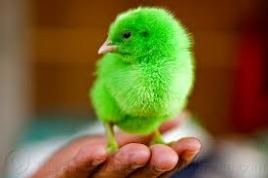Double green chickens produce carbon-smart poo
Published on 08 Jan, 2013
Media Contact: Dr Surya Bhattarai 07 4923 2140 or 0438 191 391 orFor Immediate Release
As the festive season comes to an end spare a thought for the humble chook which took pride of place on thousands of dinner tables around the country during the Christmas period.
The poultry industry in Australia is maintaining steady growth. The $4 billion chicken industry currently produces 700 million birds annually, while Australians consume about 43kg of chicken meat per head annually, and this trend is increasing.
 Click here to View/Download full-sized ImageHowever, while the demand for poultry meat grows, farmers face growth of another type – waste.
Click here to View/Download full-sized ImageHowever, while the demand for poultry meat grows, farmers face growth of another type – waste.
The poultry industry is currently facing a number of environmental problems including the accumulation of large amounts of waste, especially manure and litter. Large-scale accumulation of these wastes pose disposal and pollution related problems unless environmentally and economically sustainable management technologies are adopted.
Wet poultry litter is susceptible to the loss of nitrogen and phosphorus during its storage and after its application in the field. On average one bird loses about one gram of ammonia per day to the atmosphere, and also generates odour associated with ammonia in the shed. Assuming bird life is 60 days, 700 million birds in Australia would lose the equivalent of 42 kilotons of ammonia-nitrogen with a current market value of $42 million annually.
CQUniversity’s Centre for Plant and Water Science is working with Central Queensland feed mills and chicken producers to tackle these issues and to generate real practical solutions for the Australian poultry industry.
Professional veterinarian in Nepal and current postgraduate researcher at CQUniversity Australia, Tanka Prasai has been tirelessly working with industry partners for the past six months with promising results to date. Not only has Tanka found ways to manage the loss of ammonia and phosphorus, but also to increase bird growth rate and gain in meat yield of the treated birds – a win-win for the poultry industry.
Postgraduate supervisor Dr Surya Bhattarai says Tanka has used an integrated approach to tackle the problems faced by the poultry industry.
“Tanka uses a four-tier approach – feed additives, litter additives, smart composting and high quality granulation of poultry litter. His research already shows promising results from the feed additives such as biochar, zeolite and benetenoite in trapping ammonia and phosphorus. He is also producing benefits for bird growth and weight gains, by as much as 11 per cent compared to the control feed.
“The birds feeding on feed additives such as biochar are considered ‘double green’ on the premise that these additives minimise loss of ammonia and ammonium from poultry litters which otherwise cause environmental problems.
“The value-added poultry fertiliser with additives such as biochar when applied into soil for plant production can also help carbon sequestration, in the soil for longer term storage, therefore helping to reduce the environmental effects of greenhouse gas.”
Farmers to date have been reluctant to use biochar as soil amendments, and poultry producers in chicken feed due to perceived high costs, however Dr Bhattarai believes farmers need to look at the bigger picture, particularly in light of these recent research data . He says when biochar is incorporated as an additive in the feed and in high-value biofertilizer, there are huge benefits all round both in the growth of bird, and the value of the manure.
“We anticipate our research will generate new interest in biochar as a potential value-adding product for the poultry industry and as a means of increasing industry profitability while contributing to reduce the carbon footprint of the industry using the amended manure.
“The current carbon footprint of the poultry industry in Australia is equivalent to annual emissions of 666 kilotons. If biochar is added to the feed at four per cent by the entire industry, 84 kilotons of biochar will be amended in the litter that will potentially be responsible for trapping about 252 ton of carbon dioxide equivalent if applied to the farming.”
In an effort to make biofertilisers from biochar amended litter, CQUniversity is collaborating with Fertiliser Engineering & Equipment Company (FEECO) in Melbourne, with Barry Wilson, for granulation of poultry litter that will produce high quality granulated fertiliser.
* Postgraduate researcher at CQUniversity Australia, Tanka Prasaiis is supervised by Professor David J Midmore and Dr Surya Bhattarai.
ENDS

